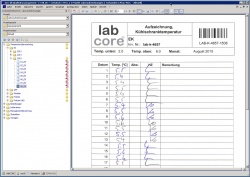Forms
The missing link in document management for ISO 15189
In everyday life in a laboratory there is a plethora of digital and handwritten records. Records are manifold: The ISO 15189 calls for example temperature lists for refrigerators, forms for new hires, audit reports, meeting protocols and more. Some are already digitally recorded and processed, other, for example Temperature lists for refrigerators, are recognized handwritten even today and archived. Here ISO 15189 formulates the request to the laboratory to control this records.


Although there is already such records in quality management software for document control, this has not yet been set for records because the workflows for records are too diverse and complex in comparison to workflows for documents (create, check, release).
The new Doc-db module for forms and records
does this work for you and digitizes the creation, distribution and archiving of records. Forms that were previously already managed in DOC db are now the
basis for records. The software instantiates a new record and directs them matching your requirements.
For the refrigerator temperatures every month a list is created, printed, hung on the respective refrigerator, handwritten, collected at the end of the month and archived. Our software can here at the beginning of the month initiate a record for all existing laboratory refrigerators, automatically create the lists and send e-mail to the appropriate departments. At month end, the software monitors the complete return of the lists. By the applied barcode, the lists can be archived by simple batch scanning and must not be stored in paper form.
The new Doc-db module for forms and records secures electronic archiving, enhancing discovery and completeness of the records and simplifies working according to ISO 15189.
Visit www.docdb.de to find out more!
29.07.2016











